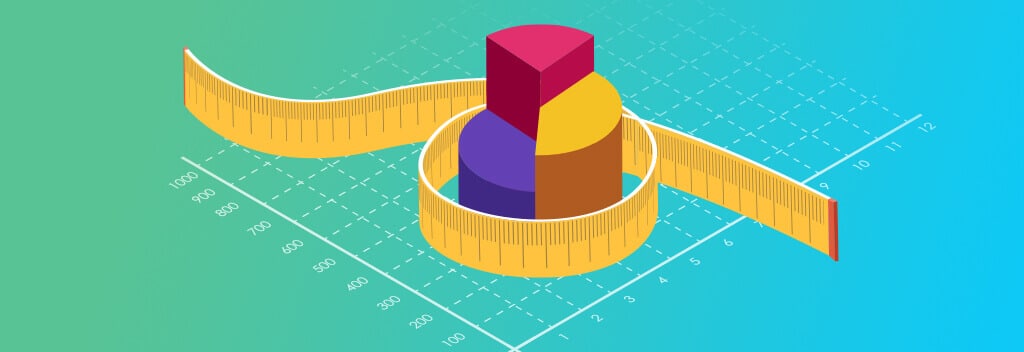New year, new website!
Is your marketing goal this year to revamp your company’s website? If so, then you are taking a step towards building a strong foundation for your marketing strategy.
As you are creating your marketing strategy and preparing for your new website project, it’s important to start with a realistic budget. There is a lot that goes into a new B2B website design, so it’s important to consider the main pieces as you outline your budget.
In this article, we share tips from our experienced web design and development team on how to budget for your B2B website design project.
Ballpark the Size of Your Website
The cost to build a 10-page website versus a 50-page website is significantly different. While you don’t need to have an exact count of pages on your new website, it helps to have a general idea. Check out your existing website and do a count of all the pages in your main navigation, along with how many blog posts you have. This won’t give you 100% accuracy, but it will give you the general idea.
Most B2B websites for service-based companies average around 25 – 50 pages. However, for product-based companies, the websites are often around 100 pages or more.
Advanced: If you are tech-savvy, you can use an online tool to crawl your existing website and report back on the number of pages and existing urls. While it’s not the only tool we use, Screaming Frog is a good tool for this purpose.
Read more: Tips to successfully oversee a B2B website project.
List Must-Haves and Nice-to-Haves
It’s rare for a company to have unlimited budget and time to build a new B2B website. Rather than cutting something important well into a website project or delaying a website launch by adding additional elements, start with a priority list before you start the project.
Draft a list of must-have elements for the website, followed by a list of nice-to-haves. The nice-to-haves will be items that you can live without for the website launch or that won’t help to attract and convert visitors. For example, it may be critical that you have a contact form, a blog feature, and a video section on your website at launch, while other items like a downloadable resource section or an interactive infographic can be pushed to a second or post-launch phase.
The biggest challenge is getting members of your team to determine what is a must-have versus a nice-to-have. If you run into any resistance as you build the priority list, bring the conversation back to lead generation and lead conversion. It matters what your prospects and clients need, not what you want.
Read more: B2B web design essentials – a quick intro for CMOs.
Think About Your Timeline and Resources
Often, B2B web design projects don’t need to have a specific target date at the outset, but it can be helpful for keeping a project on track. A question we ask prospects up front during early discussions is whether they have a target launch date or timeline. This helps to get teams focused on events that are 3 – 4 months out.
The following will help you to determine a timeline range and/or target launch date:
- Do you have any important upcoming tradeshows or conferences?
- Is there a major product or service launch coming up?
- What is the bandwidth like of your internal team?
- Do you have any major internal projects that this would conflict with?
A realistic timeline for a website project takes into account any target events (like tradeshows or product launches), as well as internal resource allocation. For example, if you are launching a new software interface in Q1, it’s likely you won’t be able to tap any of the folks involved in that interface project until it’s complete.
Read more: The benefits of using WordPress for B2B websites.
Determine If You Need Copywriting
Professional copywriting for a B2B web design project can be a big chunk of a project, in terms of timeline and budget. As you budget out your time, resources, staff, and money for your project, it’s essential that you know whether you want the B2B design agency to do the web copywriting for you or if you plan on providing all the finished copy for them to add to the design.
It’s crucial to take a practical approach to decide whether you need professional copywriting or not. While you may be a great, polished writer, you likely aren’t a trained web copywriter who is able to allocate 40 + hours each week just to writing and revising. Additionally, professional copywriters are experienced in crafting compelling copy that resonates with the end-user – but doesn’t sound like an over-the-top sales pitch. This can be a fine line for most people, so often the best bet is to work with a professional copywriter.
On the opposite end of the spectrum, you may have a highly seasoned copywriter on staff that lives and breathes your brand. If you feel confident they can produce the right copy to attract and convert prospects and they have the time to draft over 20 pages of copy to meet your project deadlines, then you may not need a copywriter on your project.
Decide If You Need Specific Features or Functionality
The most user-friendly websites are designed and developed as a cohesive unit with all of the elements accounted for at the beginning. Adding in a major feature halfway through a web design project may disrupt the overall design aesthetic or functionality of the website. As such, it’s important to determine any specific features or functionality you need before starting a project.
Features to Consider:
- Video
- Animation or movement
- Interactive elements (like infographics, quizzes or maps)
- An online store
- A blog
- Forms
- Customer portals
- Training library
These are just a few features to consider and should be put under the must-have or nice-to-have categories. It may seem that adding an online store for 5 or 6 products is not a big deal, but it can take a significant amount of development time – especially due to privacy and data protection laws.
Functionality to Consider:
- Navigation Requirements (any special requests or challenges you want to overcome with your new website).
- Site search
- Page speed
- Search engine optimization (SEO)
- Gated or ungated download offers
- CRM integrations (like SalesForce or HubSpot)
- Marketing automation
Functionality often has a large impact on the budget. If you aren’t sure whether you want something that is difficult or easy to incorporate, don’t be afraid to ask the agencies you are considering for the web design project.
Talk to Web Design Experts
If you aren’t sure exactly what to include in your website design budget, talk to experienced web design agencies. An experienced design and development agency should be able to ask you the right questions and advise you on your options. We suggest talking to 2 – 3 agencies so you can see a range of options and can determine the best fit for your B2B web design project.



